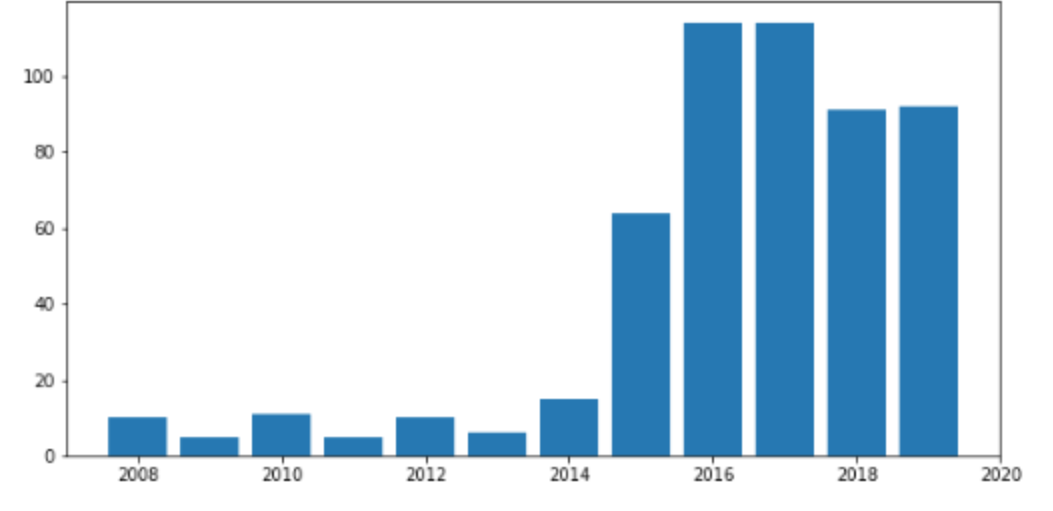Vegan burgers and other meat substitutes are becoming increasingly popular. The IPO from Beyond Meat, a US start-up that produces vegan burger patties, vegan sausages, and vegan minced meat, showed this in May. On the stock exchange, the share was able to climb over 163 percent compared with the issue price. This is the best IPO since 2000. One of the most important ingredients in Beyond Meat products is pea protein, shown by CodeCheck Insights to be the “ingredient of the month”. In this series, we will present a popular ingredient each month.
Conscious consumers choose pea protein — an increase since 2015
A look into the CodeCheck database, the leading community for conscious consumers, shows that until 2014, pea protein hardly played a role as an ingredient. It was only in 2015 that there was a noticeable increase in new products containing pea protein.
New products with pea protein per year:

Peas instead of soy — innovative ingredients on the rise
For several reasons, conscious consumers are increasingly seeking alternatives to soy meat substitutes. Soy causes allergies and negatively influences hormone metabolism. Additionally, it often has to be imported, and in the USA and South America, the plants are often genetically modified. Lastly, soy is also synonymous with the deforestation of the Amazon rainforest. ORF.at sums up the criticism of soy and highlights the advantages of pea protein: “The demand for proteins that are not genetically engineered and grown organically has grown exponentially,” quotes the CEO of Puris, the largest US producer of pea protein in the report.
Even German discounters have recognised the trend towards pea protein. Aldi and Lidl are planning to launch their own vegan burger patties on the market. The main ingredient of these burger patties is pea protein.
The Bamberg start-up Amidori, among others, recognised pea protein as an alternative to soy a long time ago and together with the Fraunhofer Institute for Process Engineering and Packaging (Fraunhofer IVV) have developed meat replacement products based on pea protein. Amidori, in which the Pfeifer & Langen Group has a stake (these include Intersnack with the brands funny-frisch and ültje and Naturkost Übelhör), uses peas only from regional and organic farming, which is much more popular with conscious consumers than imported soy.
Demand determines supply — the market will more than double by 2025
Given the hype surrounding Beyond Meat and the initiative of discounters, there is now a veritable boom in pea protein. The world consumption is already at 275,000 tons. By 2025, the value is expected to more than double to 580,000 tons. Peas are available in abundance but extracting the protein from them is a rather complex process that currently lacks production facilities. Canadian protein specialist Burcon, among others, is now investing 65 million US dollars in a new facility to accommodate the boom.
Various uses — gluten-free bread, muscle-building preparations, and sweets
Pea protein is used not only in meat substitutes but also in many other products. A glance at CodeCheck’s product database shows that pea protein is also a popular ingredient in gluten-free bread, rolls, and biscuits, egg-free vegan mayonnaise, and in muscle-building and diet preparations, as well as energy bars.
Pea protein is not an entertaining trend. Traders and manufacturers should urgently consider how they can use it for meat substitutes, for example, to meet the needs of vegans or consumers who want to reduce their meat consumption.
Looking for tailor-made insights on conscious consumers for your company?



